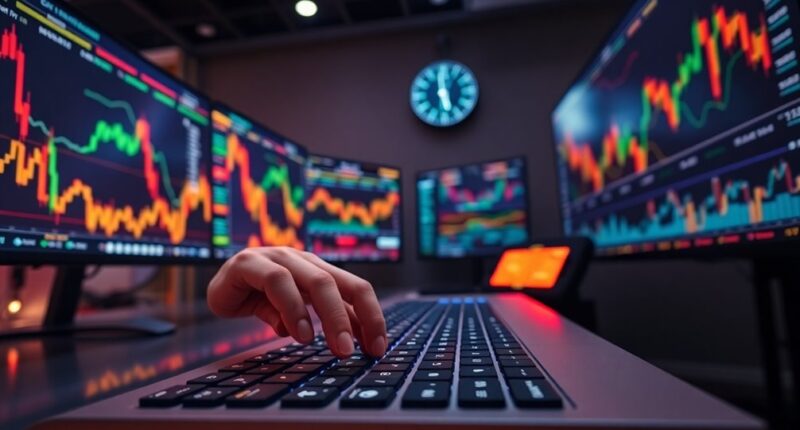When you consider that Bitcoin's price recently surged past $60,000, it's no surprise that crypto spot trading activity has skyrocketed to an unprecedented $11.3 trillion, more than doubling the peak seen in May 2021. This surge indicates a significant shift in market dynamics, driven by various factors like regulatory changes and increased institutional participation. As you explore the nuances behind this explosive growth, you'll find questions about sustainability and the future direction of the market becoming increasingly relevant. What does this mean for both seasoned investors and newcomers alike?
Key Takeaways
- Crypto spot trading volume reached $11.3 trillion, surpassing the previous peak of $4 trillion in May 2021.
- December 2024 recorded a Bitcoin price surge, contributing to a trading volume of $2.14 trillion.
- Binance dominated the market, capturing 47% of the total trading volume at $1 trillion.
- Institutional interest in crypto is growing, with 39% of investors now holding digital assets.
- Regulatory clarity from the EU's MiCA and US initiatives is expected to bolster market activity and investor confidence.
Record Trading Volume Achieved
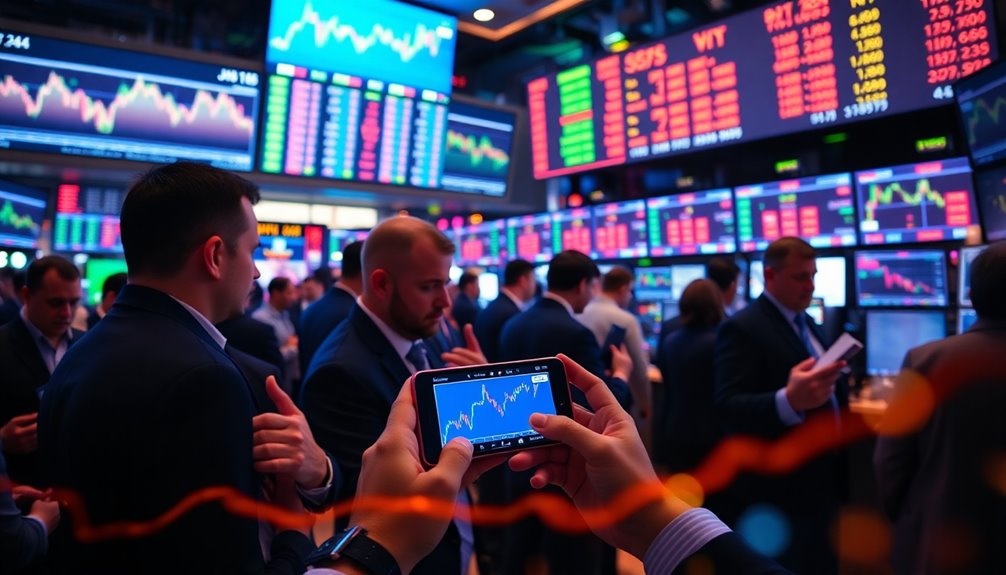
As Bitcoin's price rallied above $108,000, the crypto market experienced a remarkable surge in trading activity, culminating in a record trading volume of $2.14 trillion in December 2024. This marked an impressive 142% year-over-year growth and an 8% increase from November. While the peak of $4 trillion in May 2021 remains unmatched, this December surge indicates a strong recovery. Binance dominated the scene, capturing 47% of the market share with $1 trillion in trading volume. Exchanges like Upbit and ByBit also performed well, showcasing growth rates above 200% year-over-year. The overall market's health, driven by stable Bitcoin prices and institutional interest, bodes well for the future, making traders optimistic about continued activity.
Regulatory Changes Impacting Crypto
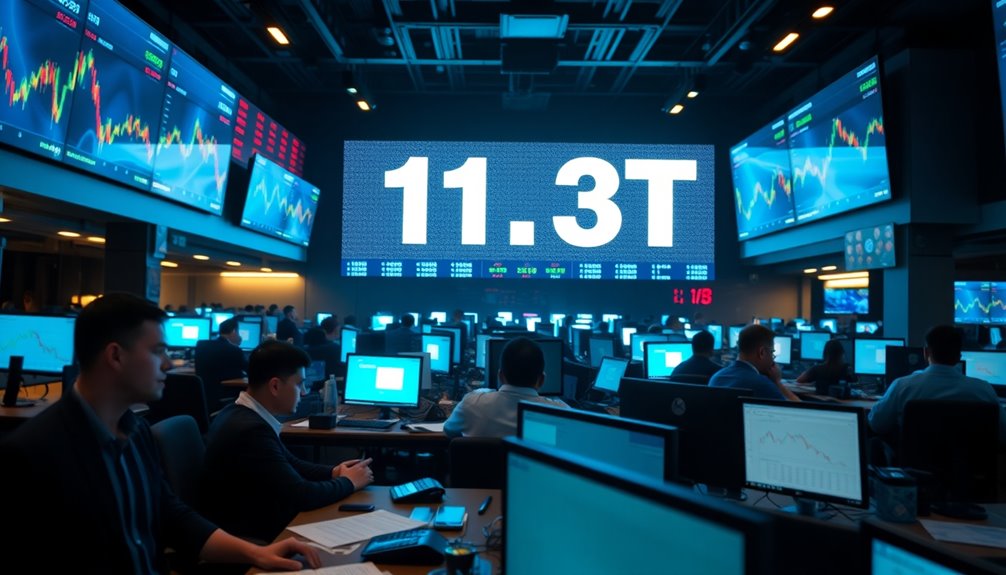
With the crypto landscape evolving rapidly, regulatory changes are playing a crucial role in shaping its future. The EU's MiCA regulation, set to fully apply by December 30, 2024, aims to provide clarity and promote stability. This framework is influencing other jurisdictions, pushing them to develop their own regulations. In the US, a significant shift is underway, with plans for a crypto advisory council and proposals like a national Bitcoin reserve. However, state-level regulations are complicating matters, as various states impose unique requirements, making compliance challenging. As federal and state agencies tighten their grips, understanding these changes is vital for anyone involved in the crypto market. Increased institutional interest can also lead to enhanced compliance measures and a more structured approach to regulatory adherence. Embracing regulatory clarity can foster growth and innovation in this dynamic field.
Market Volatility and Investor Sentiment
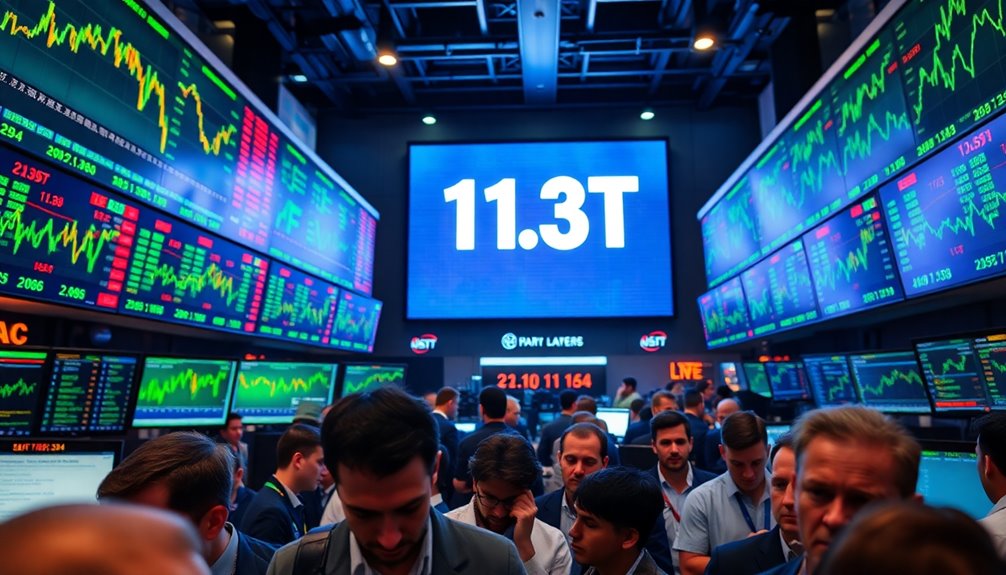
Market volatility significantly impacts investor sentiment, often swinging emotions between fear and greed.
When sudden price drops occur, you might feel a rush of anxiety, prompting you to sell. Conversely, during bullish trends, excitement could drive you to buy in hopes of maximizing gains. Tools like the Fear and Greed Index help you gauge these emotions, revealing when the market leans toward extreme fear or greed. Analyzing social media sentiment and on-chain metrics can provide further insights into public perception. Additionally, studies indicate that children of unfaithful parents may experience emotional distress, highlighting how external factors can influence individual decision-making processes.
Understanding these emotional trends is crucial, as they often correlate with price movements. By keeping a pulse on market sentiment, you can make more informed decisions, navigating the unpredictable landscape of cryptocurrency trading. Additionally, the institutional adoption of cryptocurrencies is expected to enhance price stability, further influencing investor behavior during volatile periods.
Large Funds Entering Market

Recent trends reveal a notable shift as large funds increasingly enter the cryptocurrency market, driven by a combination of regulatory clarity and strong market performance.
In 2023, about 39% of institutional investors reported having some exposure to crypto, a rise from 31% in 2021. Many are now allocating at least 10% of their portfolios to digital assets, with a third of them doing so.
Regulatory developments, like the approval of Bitcoin and ether spot ETFs, have spurred capital inflows and acceptance. Additionally, 67% of institutional investors cite maturing market and custody infrastructure as a reason for their investment.
Nearly 60% of investors expect to increase their crypto allocations in the next three years, highlighting a growing belief in crypto's potential for risk-adjusted returns, especially with recent significant price increases for Bitcoin and Ether.
Elections Affecting Market Trends
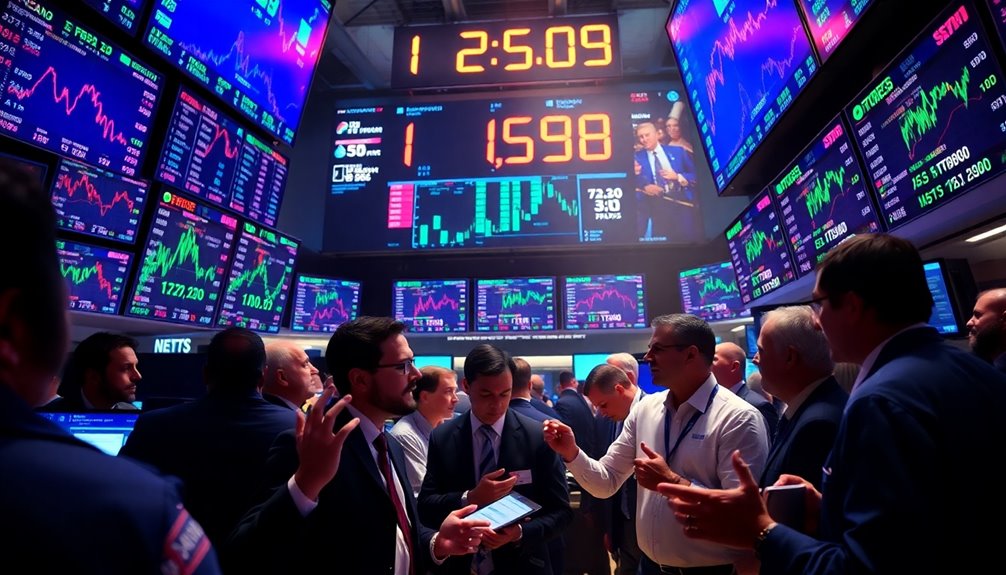
As elections unfold, they often bring significant shifts in market trends, particularly in the cryptocurrency sector.
Historically, post-election periods have led to remarkable booms, like when a $1,000 Bitcoin investment soared to over $10,000 in 2016. You might notice similar patterns after the 2020 election, where Ethereum saw significant gains.
The influence of elected leaders on regulatory bodies can also shape the crypto landscape, providing clarity that boosts investor confidence. With changes in SEC leadership and pro-crypto policies, new opportunities arise. Furthermore, the historical performance of cryptocurrencies suggests that substantial returns can follow electoral outcomes.
As super PACs back candidates favoring crypto, the sentiment tends to lean optimistic, which can drive market movements. Understanding these dynamics helps you navigate the evolving crypto environment.
Emerging Technologies Shaping Trading

While the cryptocurrency landscape evolves rapidly, emerging technologies are fundamentally reshaping trading practices.
AI-powered trading bots analyze vast datasets, helping you execute trades at the best times. Machine learning enhances fraud detection, flagging suspicious activities in real-time, while personalized user experiences guide your trading based on past behaviors. Furthermore, integrating multi-party computation (MPC) ensures that sensitive data is split across multiple locations, significantly increasing your security against potential breaches. Additionally, leveraging probiotics in frozen yogurt can support gut health, highlighting the growing intersection of health and technology in various consumer markets.
Blockchain improvements like scalability solutions and smart contracts eliminate intermediaries, boosting security and efficiency.
Decentralized exchanges (DEXs) offer you full control over your funds and enhance usability, making trading more accessible.
Additionally, tokenization allows you to trade fractions of high-value assets, opening doors to diversified investment opportunities.
These technologies not only streamline processes but also empower you as a trader in this dynamic market.
Frequently Asked Questions
What Factors Contribute to the Rise in Crypto Trading Volume?
Several factors can boost crypto trading volume. When positive news breaks, like major exchange listings or project upgrades, you'll likely see a surge in activity.
High liquidity in popular coins makes trading easier, attracting more participants. Conversely, negative news can trigger panic selling, temporarily increasing volume.
Additionally, both institutional and retail investors play vital roles, with their increasing participation often resulting in higher trading volumes as they engage more actively in the market.
How Does Crypto Spot Trading Differ From Futures Trading?
Imagine you're a sailor navigating two distinct seas: the calm waters of spot trading, where you own your boat outright, versus the turbulent waves of futures trading, where you sail borrowed ships.
In spot trading, you buy and sell cryptocurrencies for immediate ownership and settlement. In contrast, futures trading lets you speculate without owning the asset, using leverage to amplify risks and rewards.
Each path holds its own unique challenges and opportunities.
What Are the Risks Associated With Crypto Spot Trading?
When you engage in crypto spot trading, you're exposed to several risks.
Market volatility can lead to extreme price fluctuations, making it tough to predict movements.
Liquidity risks arise when you struggle to exit trades due to limited buyers or sellers.
Additionally, the lack of comprehensive regulations means you're vulnerable to scams and frauds.
Understanding these risks is crucial for making informed trading decisions and protecting your investment.
How Can New Investors Start Trading Cryptocurrencies?
With over 300 million cryptocurrency users worldwide, diving into trading can be exciting!
To start, choose a user-friendly exchange like Coinbase or Binance, focusing on security and educational resources.
Next, decide which cryptocurrencies to invest in, starting with established ones like Bitcoin.
Create a secure wallet to store your assets safely.
Finally, learn various trading strategies, start small, and make informed decisions to navigate this dynamic market effectively.
What Platforms Offer the Best Options for Crypto Spot Trading?
When you're looking for the best platforms for crypto spot trading, consider Binance for its high liquidity and low fees.
Kraken offers a user-friendly interface and regulatory compliance, while KuCoin boasts a diverse selection of altcoins.
Bybit is great for beginners and has strong derivatives, and MEXC features quick listings and zero-fee trading events.
Lastly, Bitget provides competitive fees and advanced trading tools.
Choose one that fits your trading style!
Conclusion
As you witness crypto spot trading soar to unprecedented heights, you're not just observing numbers; you're feeling the pulse of a revolution. With regulatory clarity, institutional backing, and innovative technologies at play, the landscape is transforming before your eyes. Embrace the excitement, embrace the uncertainty, and embrace the future of finance. This isn't just a trend; it's a tidal wave of opportunity, where every trade could shape your financial destiny and redefine the way you invest.
